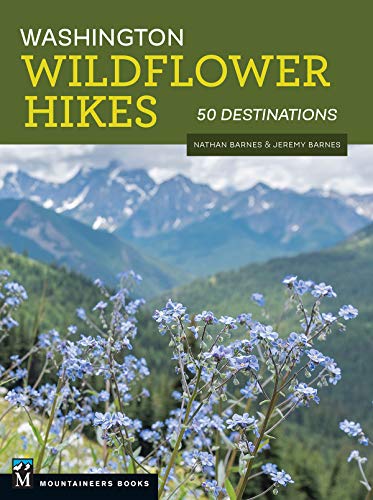Duckabush River
Follow this trail along the Duckabush River to explore a slice of The Brothers Wilderness.
Total Distance: 7.0 miles
Total Ascent: 1700ft
Highest Point: 1600ft
Total Ascent: 1700ft
Highest Point: 1600ft
To get there, take I-5 south through Tacoma to Exit 132B SR 16 toward Bremerton. Continue on SR 16 for 27 miles to merge with SR 3 North. Follow SR 3 to the Hood Canal Bridge, taking a left over the bridge onto State Route 104. Follow SR 104 as it merges onto US 101 and continue 25 miles through Quilcene to Duckabush Road (FR 2150). Turn right and follow the road 6 miles to FR 2510-060. to the trailhead (pavement ends after 3.7 miles at the Interrorem Guard Station). Turn right and find the trailhead in a few hundred feet. View Google Directions >>
The Duckabush River Trail #803 begins by following a reclaimed logging road into a young forest rising out of a sea of moss and fern. As you wander deeper into the woods, the trail begins its gentle ascent of Little Hump and enters The Brothers Wilderness around the 1 mile mark. From the top of Little Hump, you get your first glimpses of the river valley before descending down toward the river. Soon, the trail flattens and connects with the old Webb Logging Company railbed, eventually delivering you to the riverside. The sounds of the river are your hiking companion for the next half-mile, as you pass a number of idyllic spots to stop and linger by the riverside. After about 2.5 miles, reach the base of Big Hump and the end of easy hiking. Many hikers choose to call it a day here, as the river makes for a decent destination and turning around at this point avoids Big Hump’s elevation and rough trail.
For those looking for bigger views and more trail, begin switchbacking up the rocky trail carved into the shoulders of Big Hump. Occasionally rough and narrow, the route plows up the moutainside, gaining 1,000 feet in a little over a mile. As you climb, you'll pass trees bearing scars of the Big Hump Fire, eventually reaching large stands of blackened timber. Near the summit, a rocky overlook provides the best views of the river valley and St. Peter’s Dome. There’s plenty of room here to settle in and enjoy the landscape.
Still want more? The trail continues to the top of Big Hump, but there aren’t any views from the forested summit. The trail then descends back down to the river and into old growth forest, eventually reaching Five Mile Camp. At 6.7 miles the trail enters the Olympic National Park and from there continues another 16 miles out to O’Neil Pass.
This trail provides decent year-round hiking, through sections of trail on Big Hump can be dangerous in the winter. The route also travels through a variety of landscapes, from the lush and mossy riverside to the dry and dusty cliffs of Big Hump. While hikers of all ages should be able to tackle the hike out to the roaring Duckabush River, those looking for a more serious outing will find an ascent of Big Hump enough of a challenge to satisfy. With spring right around the corner, add this one to your list of hikes to catch this year’s batch of wildflowers and blooming rhododendrons.
Even before the logging ceased, hiking trails were beginning to be built along the Duckabush. The Duckabush River Trail reached Cliff Creek by 1918, and was extended by Civilian Conservation Corps workers based out of the Interrorem Guard Station. Over the years the valley continued to see fires, most recently with the lightning-sparked Ten-Mile Fire in 2009 and the Big Hump Fire of 2011. The Big Hump Fire was started on August 31, 2011 by an abandoned campfire, and eventually burned more than 1,000 acres of forest, closing the Duckabush Trail for months. Today, the charred trees lining the trail and the lingering smell of ash serve as reminders of the event.
For those looking for bigger views and more trail, begin switchbacking up the rocky trail carved into the shoulders of Big Hump. Occasionally rough and narrow, the route plows up the moutainside, gaining 1,000 feet in a little over a mile. As you climb, you'll pass trees bearing scars of the Big Hump Fire, eventually reaching large stands of blackened timber. Near the summit, a rocky overlook provides the best views of the river valley and St. Peter’s Dome. There’s plenty of room here to settle in and enjoy the landscape.
Still want more? The trail continues to the top of Big Hump, but there aren’t any views from the forested summit. The trail then descends back down to the river and into old growth forest, eventually reaching Five Mile Camp. At 6.7 miles the trail enters the Olympic National Park and from there continues another 16 miles out to O’Neil Pass.
This trail provides decent year-round hiking, through sections of trail on Big Hump can be dangerous in the winter. The route also travels through a variety of landscapes, from the lush and mossy riverside to the dry and dusty cliffs of Big Hump. While hikers of all ages should be able to tackle the hike out to the roaring Duckabush River, those looking for a more serious outing will find an ascent of Big Hump enough of a challenge to satisfy. With spring right around the corner, add this one to your list of hikes to catch this year’s batch of wildflowers and blooming rhododendrons.
History
The bounty of the Duckabush River Valley has attracted people for hundreds if not thousands of years. The Duckabush was named by the Twana people, who called it dohiaboos, which translates to “a reddish face” in reference to the red cliffs in the area. The Twana also maintained a winter village at the mouth of the Duckabush, known as duxwyabu', or “place of the crooked-jaw salmon.” That village served as a winter shelter, but throughout the rest of the year, the Twana would forage deep into the river valley, following trails worn into the valley floor over generations. Despite an influx of European settlers and treaty boundaries that relocated many traditional villages, a Twana community lingered here at least until 1880. Beginning at the turn of the 20th century, loggers began to move into the area. The Webb Logging Company claimed the Duckabush River Valley in 1912, and began building a logging railroad on the bones of native trails. The rugged terrain proved difficult, and rough-shod logging practices sparked forest fires in 1925 and 1929. Together with a growing push toward conservation in the region, the 1929 fire brought an end to logging along the Duckabush.Even before the logging ceased, hiking trails were beginning to be built along the Duckabush. The Duckabush River Trail reached Cliff Creek by 1918, and was extended by Civilian Conservation Corps workers based out of the Interrorem Guard Station. Over the years the valley continued to see fires, most recently with the lightning-sparked Ten-Mile Fire in 2009 and the Big Hump Fire of 2011. The Big Hump Fire was started on August 31, 2011 by an abandoned campfire, and eventually burned more than 1,000 acres of forest, closing the Duckabush Trail for months. Today, the charred trees lining the trail and the lingering smell of ash serve as reminders of the event.
Nearby hikes
Similar Difficulty
Similar Features












